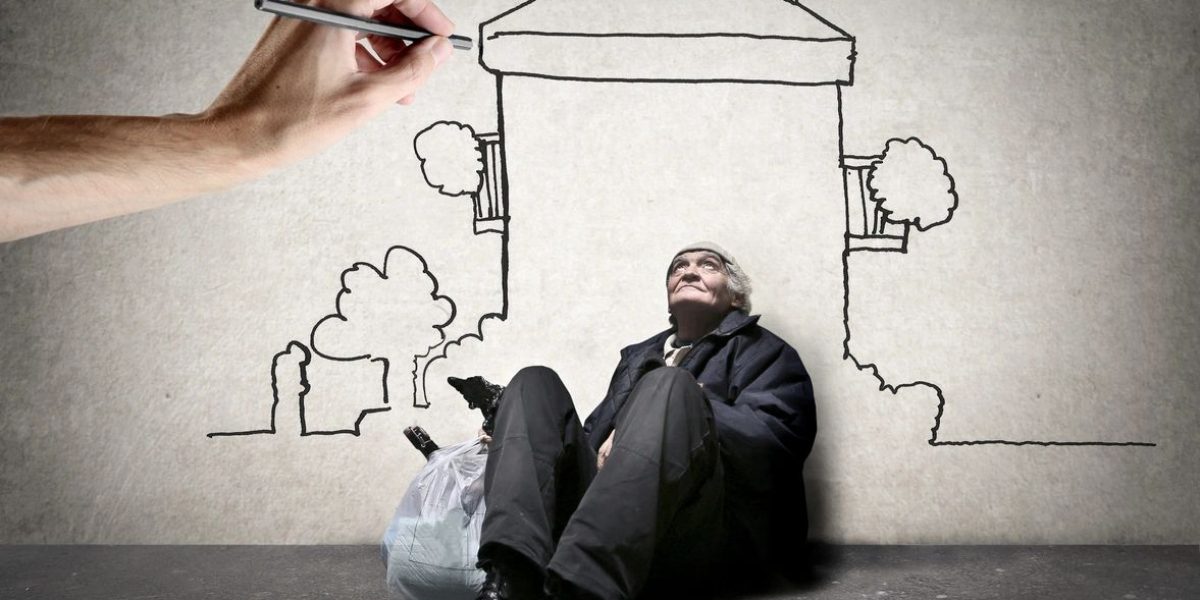An Examination of Homelessness
Homelessness is not a new problem for the United States. We have been trying to combat homelessness since the 1870s, when it first became an issue in New York (National Academies of Sciences, Engineering, and Medicine, 2017). Homelessness is “when an individual or family lacks a fixed, regular, and adequate nighttime residence” (Definitions of Homelessness, 2022). However, the practical effects of homelessness are much deeper than that. Not having a home can lead to depression, unsafe environments and actions, and constant fear.
Systemic Issues
Poverty is one of the leading causes of homelessness (Soken-Huberty, 2020). Living in poverty means one cannot afford the bare essentials, such as housing, food, education, etc. However, solving the problem of poverty-related homelessness is much more complex than simply suggesting that people “work more” or “ get better jobs” to increase their revenue streams. Such an approach to solving this problem ignores the issues present in the system.
COVID-19's Impact
Employment opportunities for individuals living in poverty are few in number and those opportunities that do exists do not often allow individuals to meet their basic financial needs. Therefore, “rising out of poverty” is not a realistic option. One significant reason for the recent lack of employment opportunities is COVID-19. During the pandemic, 16.9 million people lost their jobs, and although some were able to rebound, unemployment remained extremely high during 2020. During this time, millions fell into poverty and lost their homes.
Self-perpetuating Problems
After being unemployed and homeless, it can become challenging to gain another job. Not having a permanent address can make it harder to apply for jobs. The homeless population often lacks the proper documents needed to acquire employment because they have lost such paperwork during their transition to homelessness. Additionally, the homeless often lack access to transportation which put them at a severe disadvantage. Compounding the issue is the practice of employers refraining from hiring a homeless person because they lack trust in them and often feel that hiring such individuals comes with the additional risk that would cease to exist when hiring someone from a more stable position (Crowe, 2020). Slipping into homelessness is easy but getting back up is extremely challenging.
A Complex Issue
Simply increasing the job opportunities and incomes of individuals living below the poverty line does not necessarily address the problem of homelessness because the lack of affordable housing is another contributing factor to the problem of housing instability. A global survey by the Lincoln Institute of Land Policy showed that out of 200 polled cities, 90% were considered unaffordable, and average house prices were over three times the city’s median income (Soken-Huberty, 2020). Without affordable housing, people struggle to rent a house and continue to pay the rest of their bills.
Hidden Impediments
The impediments that contribute to the issue are not always found outside the home. Oftentimes, they come from within. Domestic violence, a danger in itself, has also been shown to contribute to the current issues of homelessness. According to research on the homeless people of Michigan, physical abuse/fear of someone was the primary cause of homelessness (Satyanathan & Pollack, 2020). Women and children living in abusive relationships are often forced to choose between a destructive relationship and homelessness (Homelessness in America, 2017). When someone escapes from an abusive relationship, they often do not have the luxury of considering what lies ahead and leave with no clear path and stable income.
A Societal Failure
Despite all the information we have, the problem is not getting better. Society continuously fails to address the issue and combat it. In recent years, homelessness has reached its highest since the Great Depression in 1930. “Over the course of City Fiscal Year 2021, 107,510 different homeless adults and children slept in the New York City Department of Homeless Services (DHS) shelter system. This includes 31,947 homeless children” (Basic Facts about Homelessness, 2022). The issue does not just end in the United States. The United Nations Human Settlements Program estimates that over 100 million people have no housing, and approximately 1.6 billion people live in inadequate housing throughout the globe (About Us: Institute of Global Homelessness). At this point, homelessness has become one of the most significant issues to impact us on this widespread level.
What's Next
After looking at the situation, it is clear that homelessness is an issue in modern society. Millions are currently displaced, with no place to call their home, and support is minimal. Therefore, it is upon us to take action.
Check back next to see what you can do to help end homelessness in America!
Works Cited
About Us. Institute of Global Homelessness. (n.d.). Retrieved August 6, 2022, https://ighomelessness.org/about-us/
Basic facts about homelessness: New York City. Coalition For The Homeless. (n.d.). Retrieved August 6, 2022, https://www.coalitionforthehomeless.org/basic-facts-about-homelessness-new-york-city/
Crowe, A. (2020, February 6). Stereotype #2: Homeless People Should Just Get a Job. The Human Impact. Retrieved August 6, 2022, https://www.thehumanimpact.org/post/stereotype-2-homeless-people-should-just-get-a-job
Definitions of Homelessness. Definitions of Homelessness | SOAR Works! (n.d.). Retrieved August 3, 2022, https://soarworks.samhsa.gov/article/definitions-of-homelessness
Homelessness in America. National Coalition for the Homeless. (2017, September 21). Retrieved August 6, 2022, https://nationalhomeless.org/about-homelessness/NPR.
Why Some Homeless Choose the Streets over Shelters. NPR. Retrieved August 7, 2022, https://www.npr.org/2012/12/06/166666265/why-some-homeless-choose-the-streets-over-shelters
Rossmanngroup. (2021, September 13). NYC Homeless Proof Design, good job! YouTube. Retrieved August 22, 2022, https://www.youtube.com/watch?v=yAfncqwI-D8
Satyanathan, D., & Pollack, A. (n.d.). Domestic Violence and Poverty (PDF) – Purdue University. Retrieved September 5, 2022, https://www.purdue.edu/hhs/hdfs/fii/wp content/uploads/2015/07/s_mifis04c05.pdf
Soken-Huberty, E. (2020, July 28). 10 Root Causes of Homelessness. Human Rights Careers. Retrieved August 6, 2022 https://www.humanrightscareers.com/issues/root-causes-of-homelessness/
The History of Homelessness in the United States. (n.d.). Retrieved August 6, 2022 https://www.ncbi.nlm.nih.gov/books/NBK519584/ v
Tracking the COVID-19 economy’s effects on food, housing, and employment hardships. Center on Budget and Policy Priorities. (n.d.). Retrieved August 6, 2022 https://www.cbpp.org/research/poverty-and-inequality/tracking-the-covid-19-economys-effects-on-food-housing
U.S. Bureau of Labor Statistics. (n.d.). Lau Economic News releases. U.S. Bureau of Labor Statistics. Retrieved August 6, 2022 https://www.bls.gov/lau/
U.S. Bureau of Labor Statistics. (2022, September 1). Questions from May 2020 to September 2022. U.S. Bureau of Labor Statistics. Retrieved September 4, 2022 www.bls.gov/cps/effects-of-the-coronavirus-covid-19-pandemic.htm



